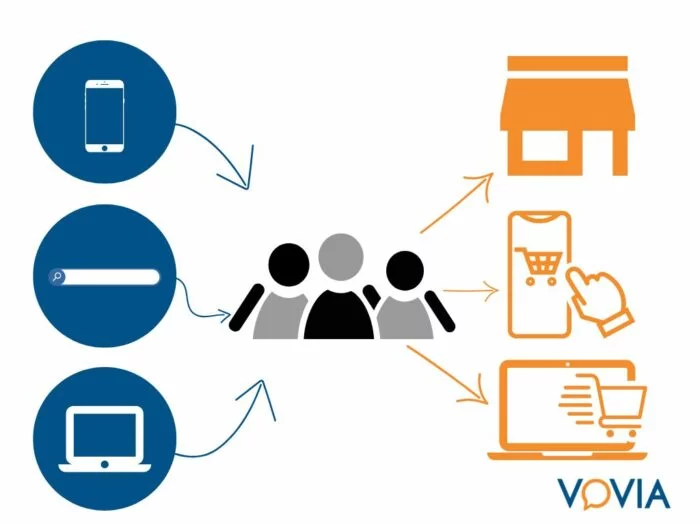Marketing attribution: a term that strikes both intrigue and confusion for many marketers. But fear not! This guide will shed light on this crucial concept, empowering you to track your marketing efforts effectively and maximize your return on investment (ROI).
What is Marketing Attribution?
Marketing attribution is the process of assigning credit to various marketing touchpoints that influence a customer’s journey towards conversion. These touchpoints can encompass anything from social media posts and blog articles to email campaigns and paid advertisements. By understanding which touchpoints contribute most to conversions, businesses can optimize their marketing strategies and allocate resources more effectively.
Why is Marketing Attribution Important?
In today’s data-driven marketing landscape, attribution is no longer a luxury, but a necessity. Here’s why:
- Maximize Marketing Budget: it helps in identifying the channels that generate the most leads and conversions. This allows you to allocate your budget strategically, focusing on the channels that deliver the highest ROI.
- Boost Leads and Conversions: By understanding which strategies drive results, you can refine your approach to generate even better results. Imagine discovering that most leads come from organic search (SEO). You can then double down on SEO optimization to attract more qualified leads.
- Measure ROI Accurately: Attribution helps you measure the true impact of your marketing efforts. By tracking conversions back to specific touchpoints, you can calculate the ROI of each channel and make informed decisions about future investments.
Types of Marketing Attribution Models
Several attribution models exist, each offering a unique perspective on customer journeys. Here are some of the most common models:

- First Interaction Model: Grants all credit for a conversion to the first touchpoint a customer interacts with. This model is useful for understanding how customers initially discover your brand.
- Last Interaction Model: Attributes the conversion entirely to the last touchpoint before a customer converts. This model is helpful for identifying the channels that directly influence conversions.
- Linear Attribution Model: Distributes credit equally among all touchpoints involved in the customer journey. This model offers a holistic view of the entire customer journey.
- Time Decay Model: Assigns higher credit to touchpoints closer to conversion, reflecting the diminishing influence of earlier interactions. This model considers the recency of touchpoints when assigning credit.
Choosing the Right Model
The ideal marketing attribution model depends on your specific marketing goals. Here are some factors to consider when choosing a model:
- Marketing Objectives: Are you focusing on brand awareness or driving conversions?
- Customer Journey: How complex is your typical customer journey?
- Data Availability: Do you have access to the necessary data to support specific models?
Many marketing analytics platforms, like Google Analytics, allow you to switch between different attribution models to gain a comprehensive understanding of your marketing performance.
Measuring Marketing Attribution

There are several ways to measure marketing attribution:
- Analytics Tools: Platforms like Google Analytics and marketing automation software provide valuable data on traffic sources, conversions, and customer interactions.
- Customer Relationship Management (CRM) Systems: CRMs can track customer interactions across various touchpoints, providing insights into the complete customer journey.
- Marketing Attribution Software: Dedicated marketing attribution software offers advanced features for analyzing customer journeys and assigning credit across touchpoints.
Marketing Attribution Reports
Marketing attribution reports consolidate data from your chosen model to reveal which marketing channels and tactics are driving the most conversions. These reports are invaluable for:
- Identifying High-Performing Channels: See which channels generate the most leads and conversions.
- Optimizing Marketing Strategies: Refine your marketing approach based on data-driven insights.
- Demonstrating Marketing ROI: Showcase the concrete impact of your marketing efforts to stakeholders.
Creating Marketing Attribution Reports
Creating marketing attribution reports is a straightforward process:
- Gather Data Tracking Tools: Utilize analytics tools, CRMs, or it software to collect data.
- Set a Time Frame: Track customer interactions over a specific period.
- Choose an Attribution Model: Select the model that aligns with your goals.
- Analyze Data: Utilize your chosen model to interpret the data.
- Compile Findings: Organize your data and insights into a clear and concise report.
Common Marketing Attribution Challenges
Here are some common hurdles you might encounter with marketing attribution:
- In-Market Bias: Consumers who already intend to purchase might be mistakenly attributed to a recent ad they saw.
- Correlation vs. Causation: Attribution models can sometimes show correlations that don’t necessarily imply causation.
- Branding and Behavior: Measuring the impact of branding efforts on customer behavior can be challenging.
By understanding these challenges and implementing best practices, you can overcome these hurdles and leverage marketing to its full potential.
Conclusion
Marketing attribution empowers you to transform your marketing efforts from a guessing game into a data-driven science. By tracking and analyzing touchpoints throughout the customer journey, you can optimize your marketing strategies for maximum impact. This translates to increased leads, conversions, and ultimately, a thriving business. Remember, marketing is an ongoing process. As you gather more data and refine your strategies, your attribution models will become even more accurate, allowing you to continuously optimize your marketing spend and achieve superior results.
For an in-depth exploration of the marketing attribution landscape, consider consulting resources from reputable marketing organizations like the Marketing Attribution Partners (MAP).
In addition to the points mentioned above, consider including a call to action (CTA) in your conclusion. This could be something like:
- Ready to unlock the power of marketing attribution for your business? Explore our marketing attribution solutions today!
By providing a clear next step, you can encourage readers to take action and learn more about how marketing attribution can benefit their business.





